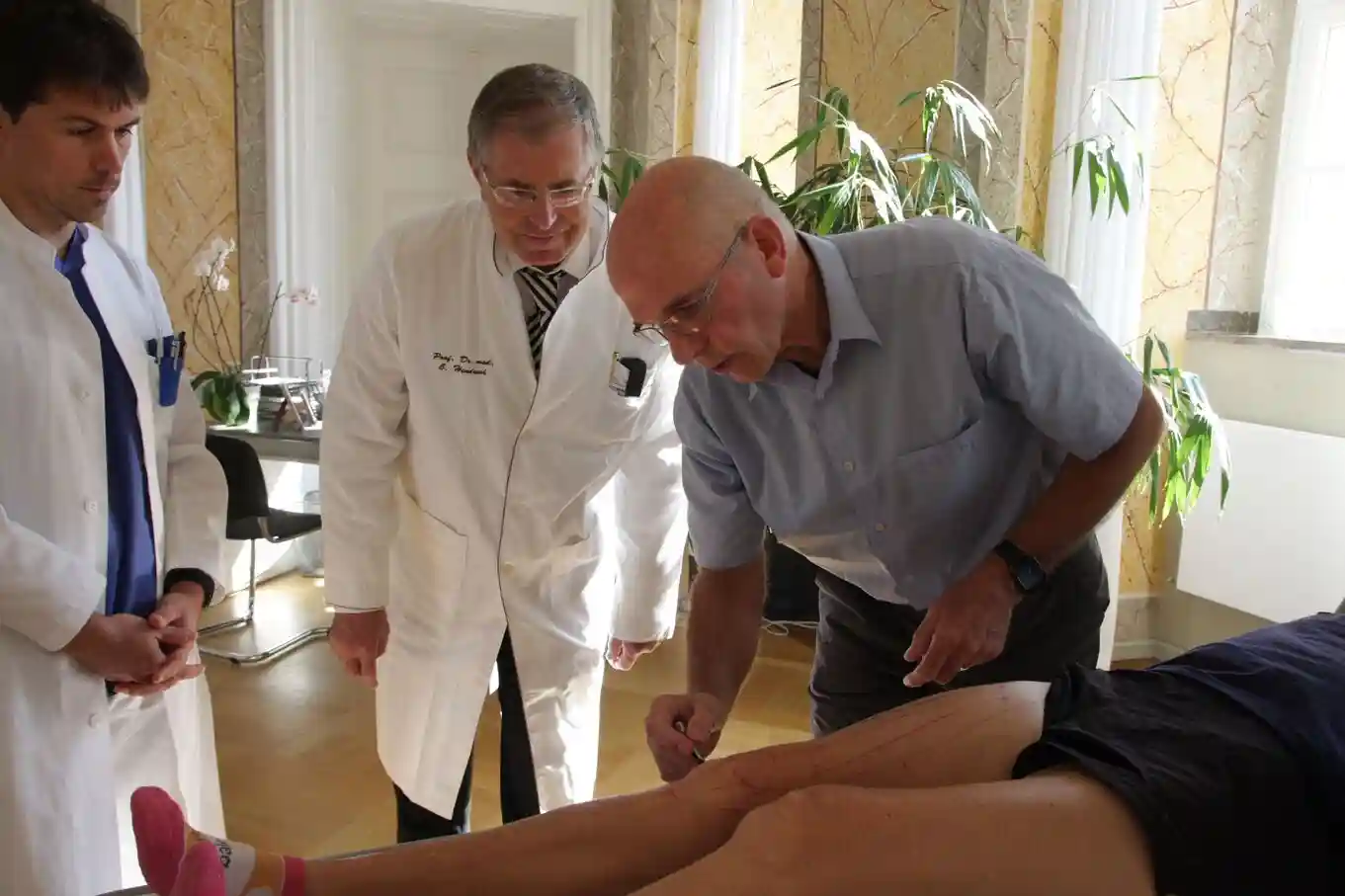Dr Lyftogt graduated from the Leiden University (Netherlands) in 1973, then moved to Christchurch, New Zealand and established a family medicine practice in 1978. He developed an interest in sports medicine and chronic musculoskeletal injuries and undertook postgraduate training in musculoskeletal medicine.
Discovery & development of the technique
While treating chronic tendon problems Dr Lyftogt noted that subcutaneous injections around the painful tendon produced surprisingly good results — with less pain from the injection and good functional improvement. He realized that many musculoskeletal pains might be due not only to tendon/ligament damage, but also to “sensitized” small sensory nerves in the subcutaneous tissue. From this, he hypothesized that injecting a solution just under the skin, next to these sensory nerves, might reduce neural‑mediated pain.
Initially he used higher concentrations of dextrose (20–40 %) in his injections (drawing from classic prolotherapy techniques) and published on what he called “subcutaneous prolotherapy” or “neural prolotherapy”. Over time, Dr Lyftogt found that using a lower concentration — namely 5 % dextrose in sterile water (D5W) with neutral pH – (injections subcutaneously at nerve‐sensitive sites) yielded good outcomes for chronic neuropathic or musculoskeletal pain, with less post injection pain during the recovery phase. Because the technique differed from classic prolotherapy (which targets tendons/ligaments/entheses with higher concentrations and often deeper injections), the naming evolved. The terms shifted from “Subcutaneous Prolotherapy” to “Neural Prolotherapy (NPT)” and finally to the more descriptive: Perineural Injection Treatment (often abbreviated PIT).
Proposed Mechanism & theory
The core idea is that sensitized small sensory nerves (especially unmyelinated C‑fibers) in the skin and subcutaneous tissues over joints or tendon insertions can be a cause for perpetuate pain. By injecting D5W (or similar) next to these nerves, the goal is to calm the neurogenic inflammation, restore normal nerve function and thereby reduce pain signals and allow the musculoskeletal tissues to recover. The technique emphasizes subcutaneous, shallow injections adjacent to nerve/skin boundaries rather than deeper injections into tendons/ligaments.
Summary
- Dr Lyftogt observed that injecting around superficial nerves could reduce chronic pain clinically even when conventional treatments had difficulty.
- He refined the method from deeper prolotherapy‐style injections to shallow perineural injections with low‐concentration D5W.
- He formalized the approach, changed the name to Perineural Injection Therapy to distinguish from classic prolotherapy, and has educated practitioners internationally. According to Dr Lyftogt website, over 3,500 health professionals from 30+ countries have attended educational events on this method (as of the time of writing).
- The technique continues to be taught internationally and is described under various names (perineural injection therapy, neural prolotherapy, perineural subcutaneous injections).
- The technique is used for a variety of chronic pain / neuropathic / musculoskeletal conditions where superficial nerve sensitization is believed to play a key role.
- There is clinical research supporting its use with some medial conditions, however more research is needed to help develop a greater awareness of its full potential.


